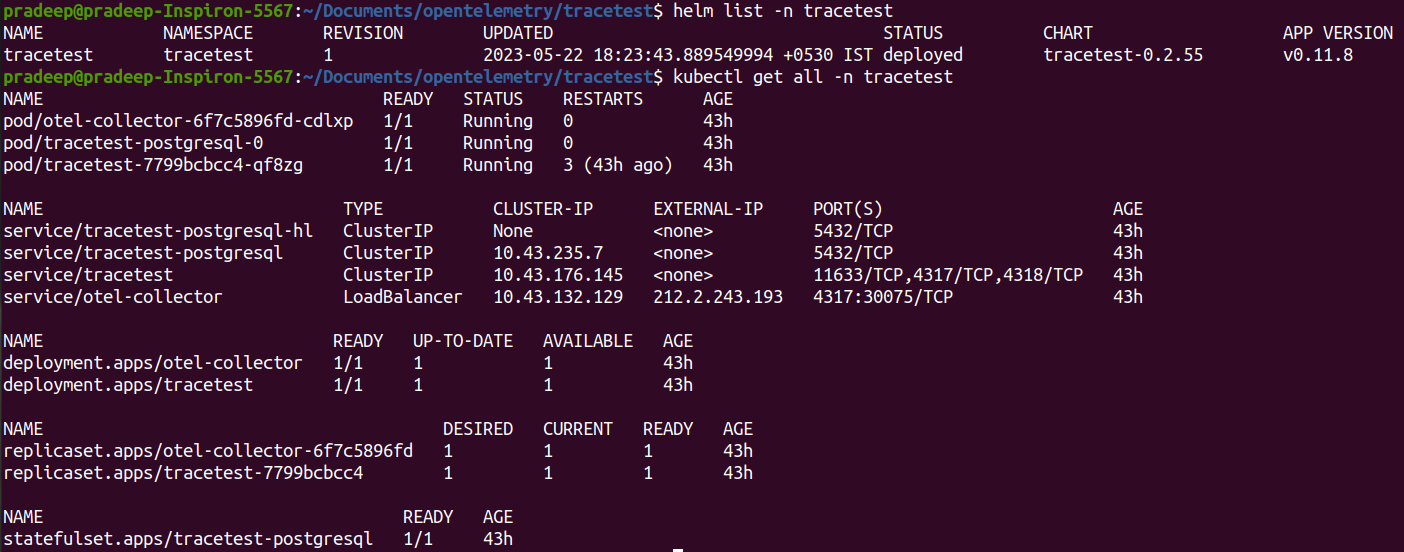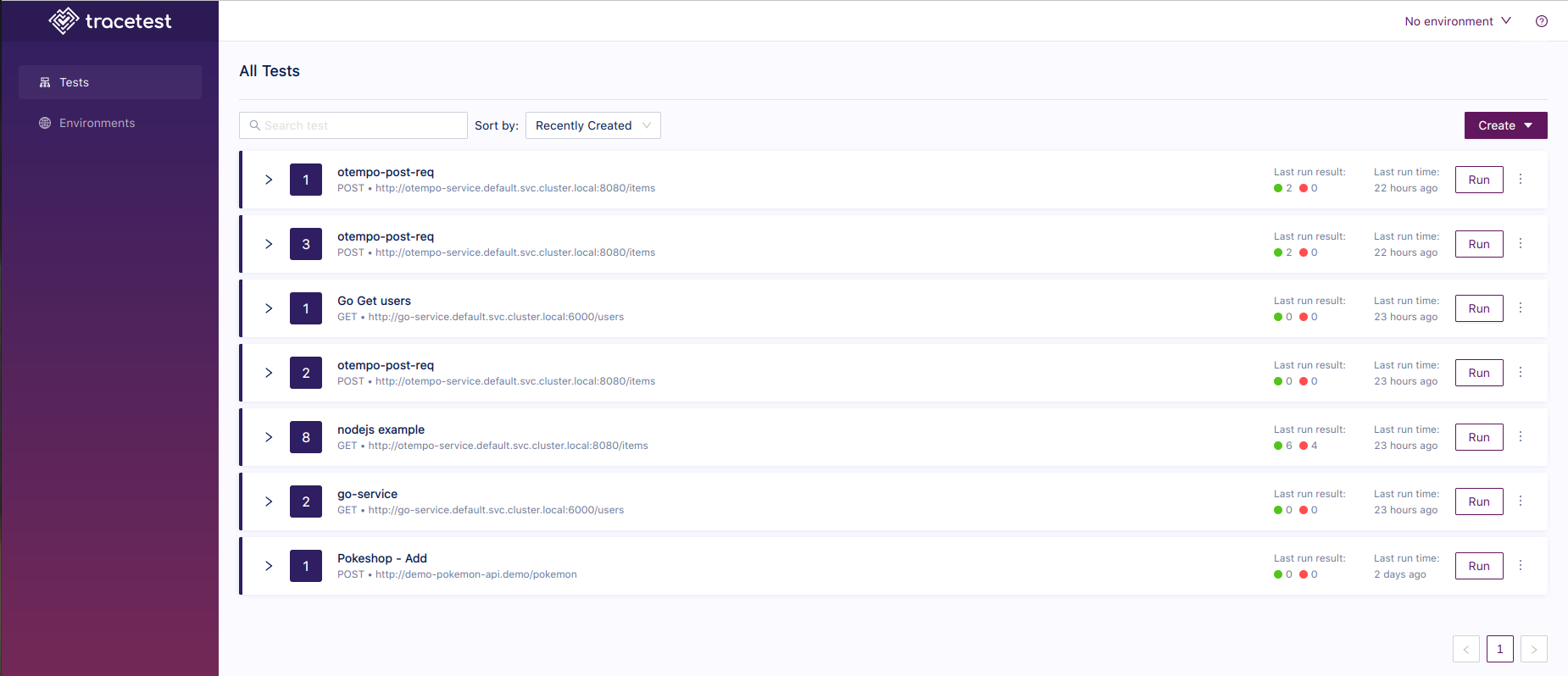Getting started with tracetest
Why tracetest
Tracetest enables trace-based testing using OpenTelemetry traces, allowing you to define tests and assertions against microservices at every step of a request transaction. It offers flexibility in using your preferred trace backend, supports multiple transaction triggers, and ensures both response and underlying process correctness.
Setting up tracetest on k8s
Install Tracetest CLI on local
LINUX
curl -L https://raw.githubusercontent.com/kubeshop/tracetest/main/install-cli.sh | bash
WINDOWS
choco source add --name=kubeshop_repo --source=https://chocolatey.kubeshop.io/chocolatey ; choco install tracetest
MAC
brew install kubeshop/tracetest/tracetest
Install the Tracetest server through Tracetest CLI
On terminal run the below command after installing the tracetest cli.
tracetest server install
Then you will find 2 options to setup the tracetest server. There you need to select kubernetes installation. Please check the below result after run the above command.
How do you want to run TraceTest? [type to search]:
Using Docker Compose
> Using Kubernetes
Install the Tracetest server through Helm
You can find the Helm chart github location in below link Github tracetest helm repo
You can install them locally on your machine with the command:
helm repo add kubeshop https://kubeshop.github.io/helm-charts
helm repo update
After that, you can install Tracetest with helm install:
helm install tracetest kubeshop/tracetest --namespace=tracetest --create-namespace
You will deployments of tracetest on tracetest namespace.

NOTE:
- Follow the prompts and continue with all the default settings. This will deploy all resources to Kubernetes. To see exactly what is deployed, view the deployment instructions in the Deployment section of the docs.
Condensed expected output from the Tracetest CLI:
export POD_NAME=$(kubectl get pods --namespace demo -l "app.kubernetes.io/name=pokemon-api,app.kubernetes.io/instance=demo" -o jsonpath="{.items[0].metadata.name}")
export CONTAINER_PORT=$(kubectl get pod --namespace demo $POD_NAME -o jsonpath="{.spec.containers[0].ports[0].containerPort}")
echo "Visit http://127.0.0.1:8080 to use your application"
kubectl --namespace demo port-forward $POD_NAME 8080:$CONTAINER_PORT
kubectl --kubeconfig <path-to-your-home>/.kube/config --context <your-cluster-context> --namespace tracetest port-forward svc/tracetest 11633
Open your browser on http://localhost:11633.
You can now able to create tests on the UI of tracetest.
:star: Here is the UI of tracetest

Reference Links
Conclusion
Tracetest revolutionizes testing by leveraging OpenTelemetry traces. It enables trace-based testing with assertions at every step of a request, supporting multiple transaction triggers and offering flexibility with trace back-ends. Tracetest ensures both response and underlying process correctness, making it a valuable tool for end-to-end and integration testing in distributed systems.
